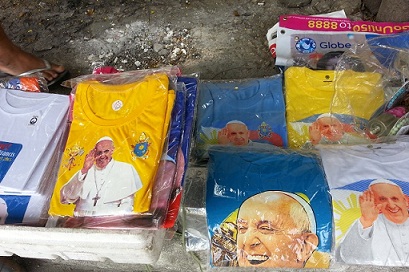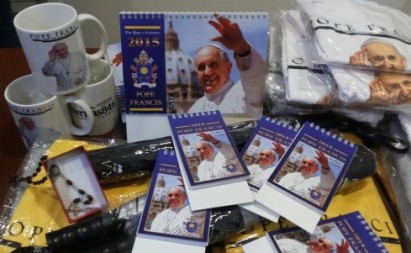To those who will brave the heat (hopefully it doesn’t rain), the long walk, the long wait, hunger and thirst, bless your courage and your determination.
I hope and pray that our love for Pope Francis will include taking care of our environment. I hope that as we try to cleanse our soul, we will make sure that we don’t dirty our surroundings.
The EcoWaste Coalition said last year, during the celebration of the World Environment Day on June 5, Pope Francis urged everyone “to make a serious commitment to respect and protect creation, to be attentive to every person, to counter the culture of waste and disposable, to promote a culture of solidarity and of encounter.”
“The Pope’s visit is an opportune time to roll out a campaign that will show our people’s unity and determination to switch to a ‘Zero Waste Pilipinas’ where waste prevention and reduction is the norm of life,” said Aileen Lucero, coordinator, EcoWaste Coalition.
We share Lucero’s concern that “It will be very sad and ironic if the activities of Pope Francis, particularly the huge outdoor assemblies, will leave tons of garbage behind as the country observes the ‘Zero Waste Month’. We should avoid a repeat of the enormous garbage at the closing Mass of the 1995 World Youth Day in Manila, presided over by then Pope John Paul II and which drew over five million attendees.”
Pope Francis visit coincides with the observance of Zero waste month every January proclaimed by President Aquino.
Zero Waste according to Aquino’s Proclamation 760 “is a goal that is ethical, economical, efficient and visionary to guide people in changing their lifestyles and practices to emulate sustainable natural cycles, where all discarded materials are designed to become resources for others to use.”
Lucero said,“Pope Francis is known for his simplicity, his preference for public transportation, and his affection and respect for those who recycle such as the waste pickers.”
The honor and adulation for him should include emulating the virtues that he lives by.Lucero recalled that the plea for “Zero Waste” by the late Jaime Cardinal Sin in 2003 on the occasion of the 4th World Meeting of Families should inform and guide the Catholic Church in preparing for the papal visit.
The late church leader exhorted the faithful to make the said meeting a “zero waste celebration of life” and outlined four simple steps to make that happen, to wit: “1) minimize the creation of waste by using as few resources as possible at the various events, 2) avoid using plastic and disposable items, 3) separate discards into biodegradable and non-biodegradable, and 4) put them into their proper containers to facilitate recycling and make simpler the work of cleaners and collectors.”
A waste reduction project carried out by the Archdiocese of Manila, the EcoWaste Coalition and informal recyclers from Smokey Mountain at the concluding Mass of the 4th World Meeting of Families in Rizal Park achieved a 90% waste diversion rate, retrieving 1,573 kilos of recyclable materials that were sold to recyclers and 600 kilos of food waste that were turned into compost.
“We truly hope that the visit of Pope Francis to our land will be a zero waste celebration of faith and life,” Lucero said.
After the Pope Francis event, there should be no mountains of garbage for other people to dispose. Or we should all help in making every venue of Pope Francis gathering as clean as when we entered it.
The EcoWaste Coalition warns against pewter or pewter-like pendants of Pope Francis and the Papal Cross that have been found to contain dangerous level of lead.
“We got the shock of our life to discover souvenir items with pewter or pewter-like pendants of Pope Francis and the Papal Cross that had dangerous levels of lead. Some are of a size that could be mouthed by children as if it was a toy,” said Thony Dizon, coordinator of the EcoWaste Coalition’s Project Protect.
Exposure to lead has been linked to major health issues such as learning disabilities, anemia, joint and muscle weaknesses, behavioral problems, organ failure and even death.
On a happy note, Dizon said most papal souvenirs that they have screened for lead, using a handheld X-Ray Fluorescence (XRF) device, are “thankfully non-toxic. “
“Pope Francis, who has a master’s degree in chemistry, would be happy to know that many faith-inspired products are safe from such poison and generally pose no risk to human health and the environment,” Dizon said.
As we welcome Pope Francis, let’s all pray for his and everyone’s safety.







